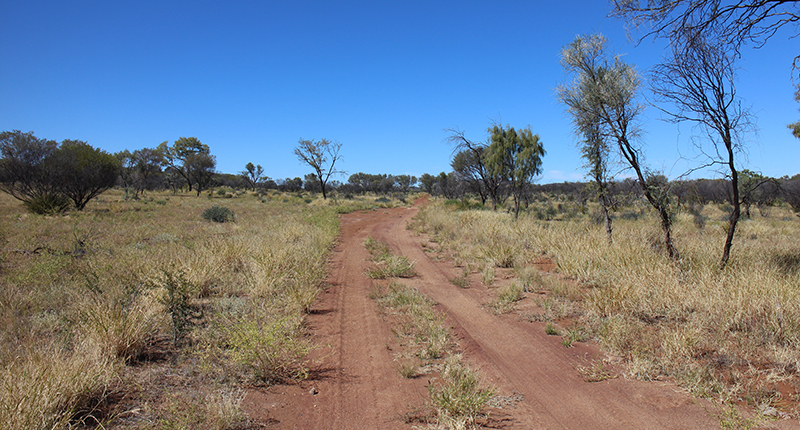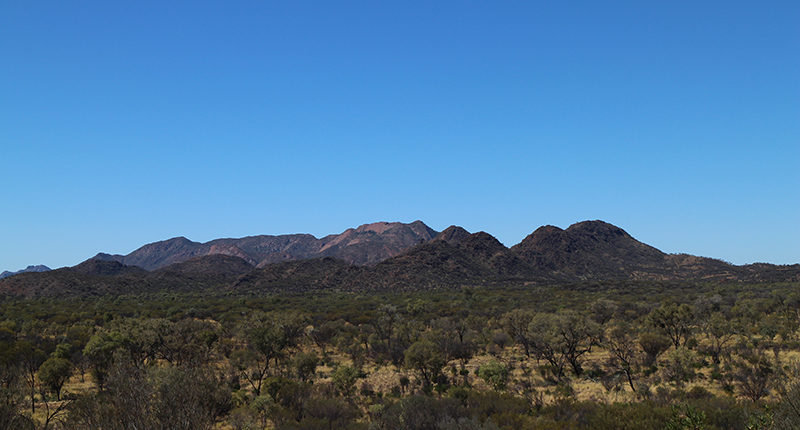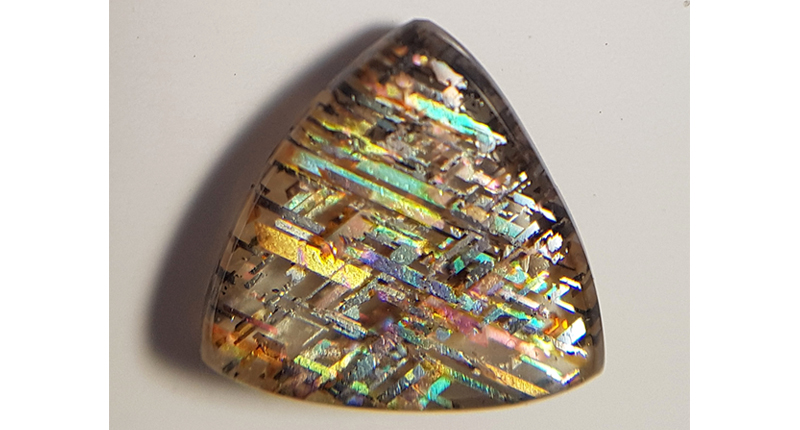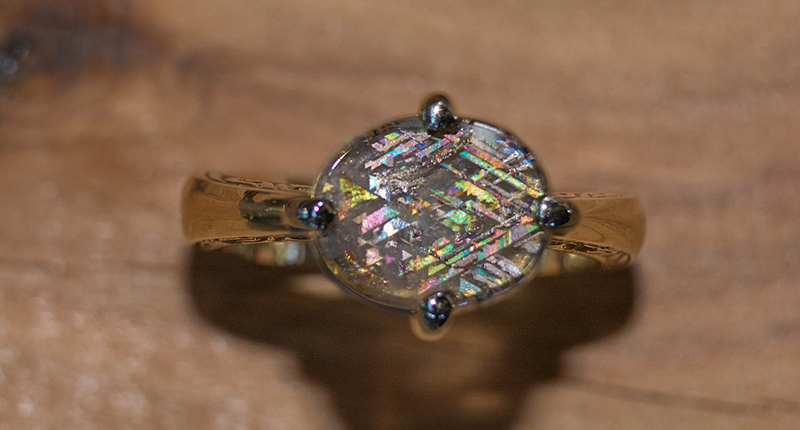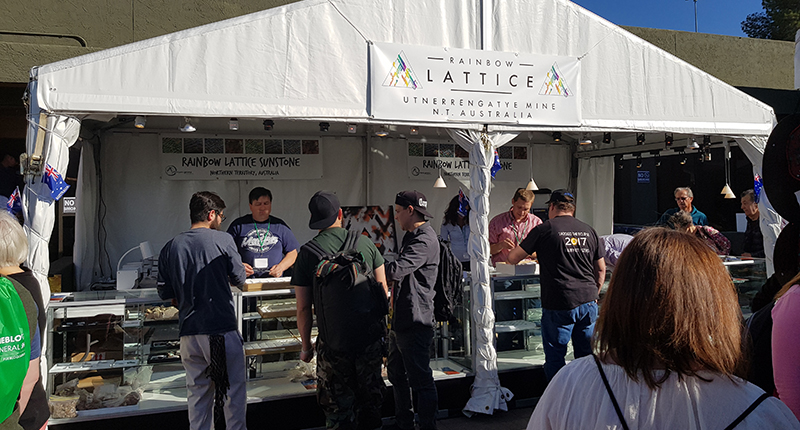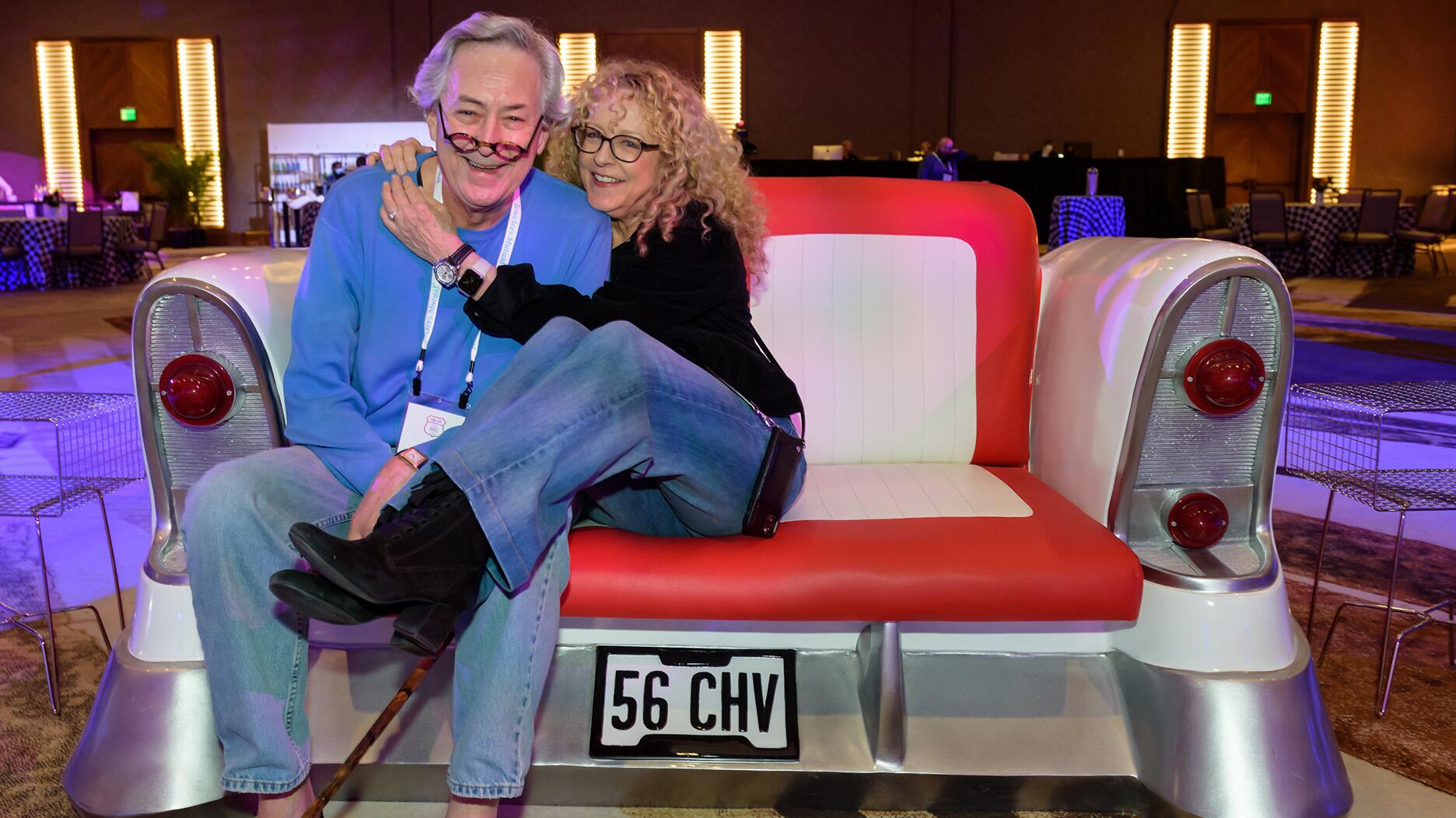The luxury goods company said founder Ippolita Rostagno will remain at the brand’s helm.
5 Things to Know About … Rainbow Lattice Sunstone
Learn more about the feldspar with magnetite inclusions in perfect parallel lines.

There’s something so striking about geometry and perfect patterns found in nature.
For one small area in northern Australia, these features are presented in the form of “lattice” pattern inclusions in a gemstone that would make any rock hound stop in her or his tracks.
Rainbow lattice sunstone is unusual in its appearance—showing both aventurescence, caused by small inclusions of a mineral with a highly reflective surface, and the optical phenomenon adularescence—and rare to find.
It is rare for aventurescence to occur together with adularescence, and the material is made even more interesting when you add the presence of the colorful lattice.
Asterism Gems Australia, a company formed in 2015, is working to get approval on a mining lease for the small area from which it is sourced.
Here are five things to know about rainbow lattice sunstone.
1. It’s relatively new, in mining terms.
Darren Arthur and a late friend, Sonny Mason, were the original discoverers of the material in 1985.
Arthur said Mason had a small claim on it for some years, with small amounts of rainbow lattice sunstone filtering into the market over time, but that claim lapsed a few years ago.
In 2015, Arthur and a second gemologist created Asterism Gems. They then assessed and sampled the area that showed potential for a mining lease, and, having enough stock to supply the market, started the lease application process.
Arthur said the company expects it be approved later this year.
2. It has an interesting composition.
Rainbow lattice sunstone is a feldspar comprised of 75 percent orthoclase and 25 percent albite.
(The material has been referred to as “rainbow lattice sunstone” since its discovery, but Arthur said the company recently decided to drop the “sunstone” moniker for marketing purposes and to avoid comparison to regular sunstones. However, since much of the educational material about it still uses the whole name, including an article referenced below, I decided to keep it.)
It originally was believed that the black blades and triangle inclusions were ilmenite, but improved technology over the last three decades has shown them to be magnetite.
In fact, the Gemmological Institute at the China University of Geosciences recently took another look at the material and just published an article in the Gemmological Association of Great Britain’s Journal of Gemmology (36(1), 2018, pp. 44–52) confirming this and more about the science behind rainbow lattice sunstone.
The material, it said, features a rare combination of phenomena including aventurescence
The Journal also noted that the inclusions causing the aventurescence have been identified as hematite, while the lattice patterns consist of “orangey brown” platelets of hematite and black platelets of magnetite.
3. It only comes from one place.
Rainbow lattice sunstone is found in a remote area of desert named the Mud Tank Zircon Field, located in Harts Range in Australia’s Northern Territory.
Once Asterism’s mining license is approved, the company will have the only mining claim for the area, both Arthur and Gem-A said. Arthur said they will mine using only hand tools.
(According to the aforementioned Gem-A article, there is another rainbow lattice sunstone occurrence a little more than 4 miles away, but it produces lower-quality material.)
4. Production is small.
According to Asterism Gems, rainbow lattice sunstone is a difficult material to work with and has a lot of cracks, so it can be hard to find any sizeable, clean pieces.
Arthur said the mining lease will be smaller than 500 x 400 meters, an area which includes the entire deposit. He added they have found material in less than 10 percent of this area.
He called it a “very finite deposit” that “rarely” provides good size and the fine quality needed to cut the best gems. “Indications are that over 90 percent of what we will mine will only suit the metaphysical and collector’s market,” with only a small amount of gem quality being produced per day.
It is sold as both partially polished rough pieces as well as cabochons.
When it comes to pricing, though, rainbow lattice’s value has steadily increased over the past few years, he added.
5. There is opportunity in the U.S. market.
For the past two years, Asterism Gems has exhibited at the Riverpark Inn in Tucson, Arizona, when the gem shows take over the city.
“Rainbow lattice has been well accepted in the U.S. and, to date, it is our biggest market,” Arthur said.
He added that the Chinese and Japanese markets are starting to learn about it, and the company expects demand to increase over the next year as full-scale mining begins.
The Latest

Laura Burdese, who joined the Italian luxury brand in 2022, will take on the role in July.

Need a gift for the cat lover who has everything? Look no further than our latest Piece of the Week.

How Jewelers of America’s 20 Under 40 are leading to ensure a brighter future for the jewelry industry.

It purchased the “Grosse Pièce,” an ultra-complicated Audemars Piguet pocket watch from the ‘20s, for a record-breaking price at Sotheby’s.


The lab-grown diamond grower now offers custom engagement and fashion jewelry through its Kira Custom Lab Jewelry service.

The boutique is slated to open this week inside Terminal 8, offering pre-owned Rolex watches and more to international travelers.

Roseco’s 704-page catalog showcases new lab-grown diamonds, findings, tools & more—available in print or interactive digital editions.

Sponsored by Digital Monitoring Products

The special-edition egg pendant ingested in a New Zealand jewelry store was recovered after a six-day wait.

Associate Editor Natalie Francisco plays favorites with Piece of the Week, selecting a standout piece of jewelry from each month of 2025.

The “Love and Desire” campaign is inspired by the magic that follows when one’s heart leads the way, said the brand.

Two awardees will receive free tuition for an educational course at the Swiss lab, with flights and lodging included.

Berta de Pablos-Barbier will replace Alexander Lacik at the start of January, two months earlier than expected.

Sotheby’s held its first two jewelry sales at the Breuer building last week, and they totaled nearly $44 million.

Winners will receive free registration and lodging for its fourth annual event in Detroit.

Here are six ideas for making more engaging content for Instagram Reels and TikTok, courtesy of Duvall O’Steen and Jen Cullen Williams.

The honorees include a notable jewelry brand, an industry veteran, and an independent retailer.

Carlos Jose Hernandez and Joshua Zuazo were sentenced to life without the possibility of parole in the 2024 murder of Hussein “Sam” Murray.

Yood will serve alongside Eduard Stefanescu, the sustainability manager for C.Hafner, a precious metals refiner in Germany.

The New Orleans jeweler is also hosting pop-up jewelry boutiques in New York City and Dallas.

Set in a Tiffany & Co. necklace, it sold for $4.2 million, the highest price and price per carat paid for a Paraíba tourmaline at auction.

The jeweler’s “Deep Freeze” display showcases its iconic jewelry designs frozen in a vintage icebox.

Take luxury gifting to new heights this holiday season with the jeweler’s showstopping 12-carat sphene ring.

This year's theme is “Unveiling the Depths of the Ocean.”

In its annual report, Pinterest noted an increase in searches for brooches, heirloom jewelry, and ‘80s luxury.

Starting Jan. 1, customers can request the service for opal, peridot, and demantoid garnet.











